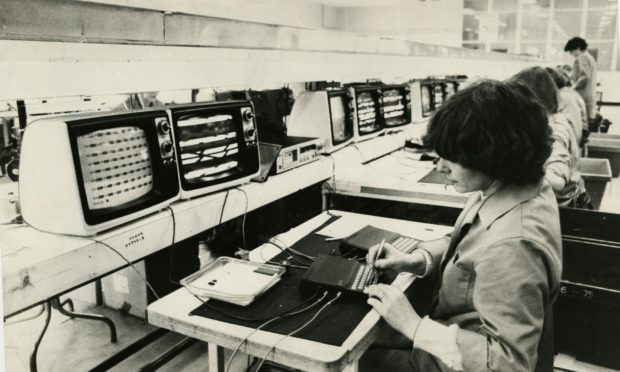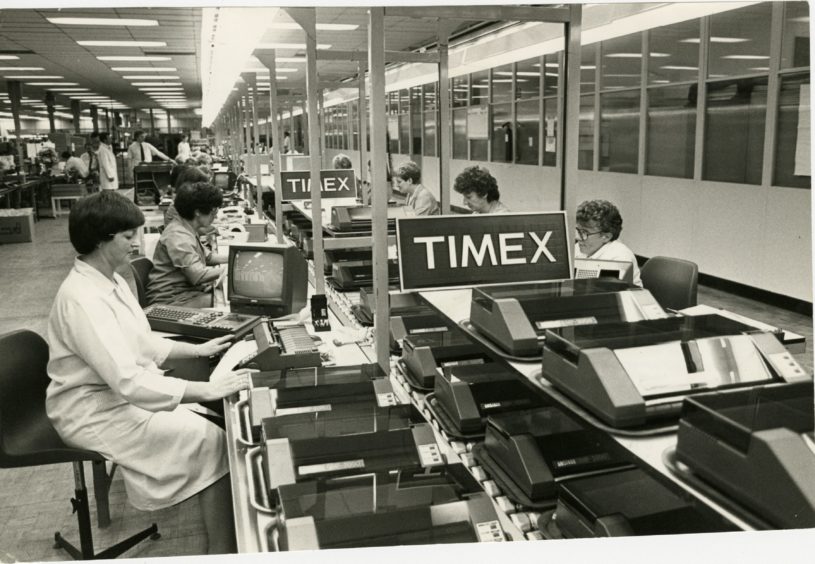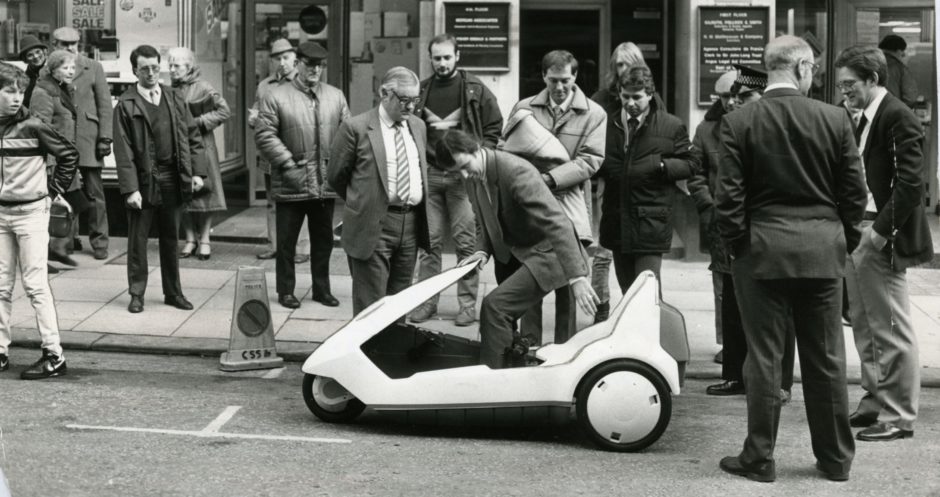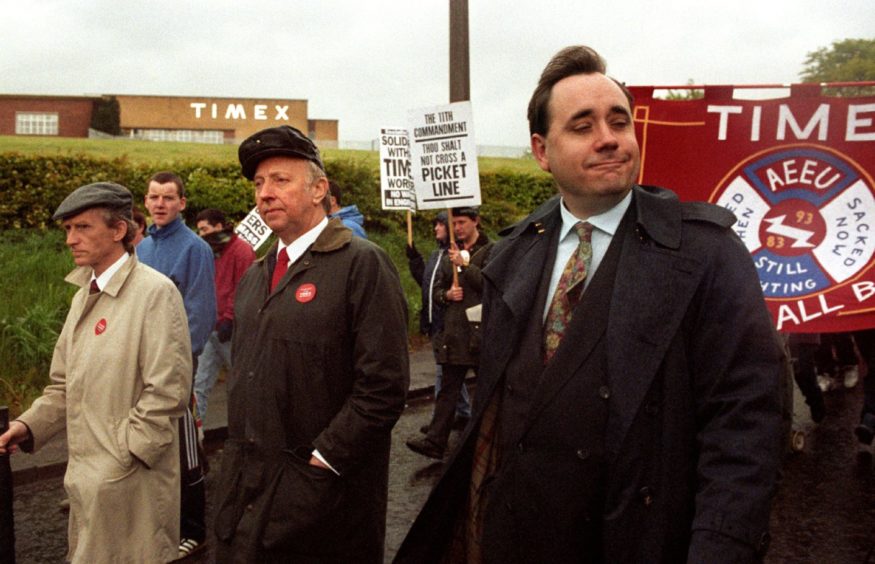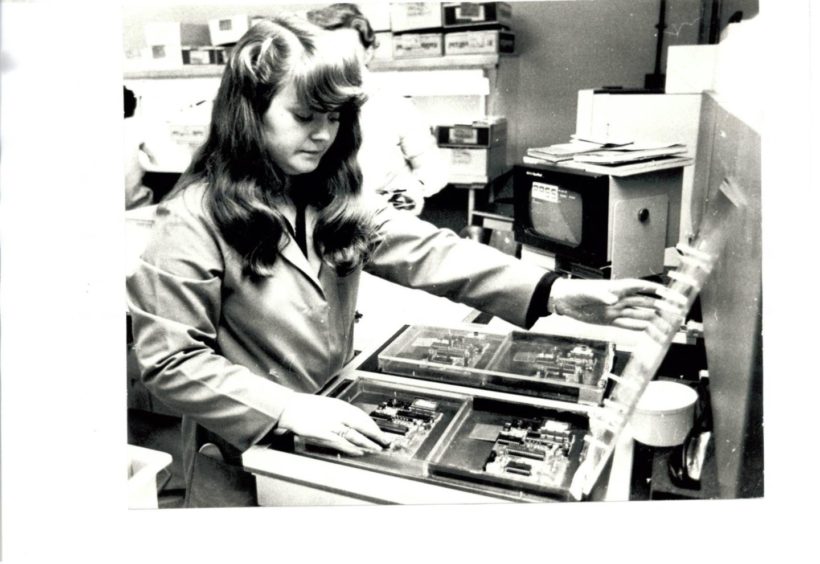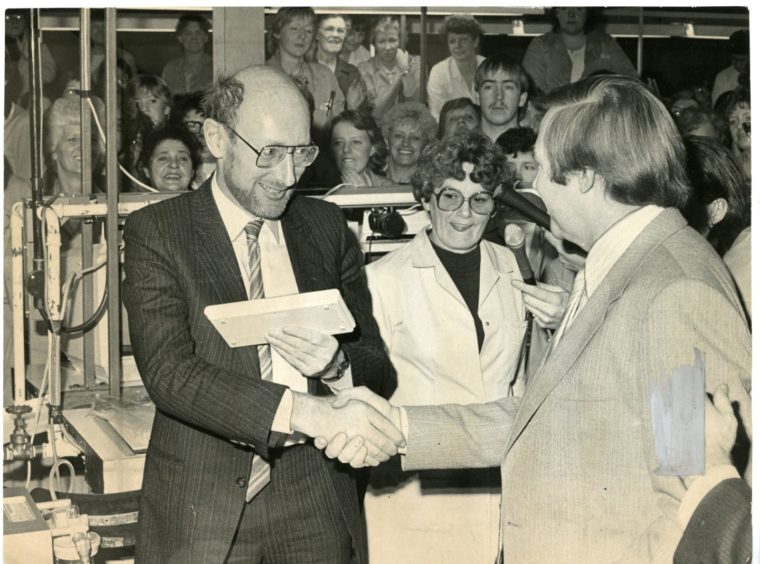An army of female workers were the Timex heroes who made millions for the late Sir Clive Sinclair in the 1980s.
The production of the ZX Spectrum at the Camperdown plant would also go on to play an important role in the birth of Dundee’s video games sector.
Here was a workforce which had skilled, nimble fingers which were perfect for watch manufacture and produced generations of the most skilled engineers in the country.
The market for Timex mechanical watches had evaporated and chairman Fred Olsen attempted to find other products to keep the plant going.
Mr Olsen persuaded Sir Clive – who has died aged 81 – to let the Dundee plant handle the assembly of the ZX81 computer which was the successor to the ZX80.
The ZX80 was released in 1980 as a cheap introduction to home computing before the ZX81 was launched in March 1981.
The ZX81 progressed beyond its initial mail-order-only policy and was shipped out from the Timex factory to WH Smith shops for sale at £69.95.
Instant hit
The ZX81 became an instant hit which went on to sell over a million before the ZX Spectrum was released in 1982 which sold five million during its lifetime.
Sir Clive visited the Timex factory in 1983 and was presented with a special white version of the machine to celebrate the millionth unit sold.
Timex was now producing a computer every four seconds and games like Football Manager by Kevin Toms kept them rolling off the production line.
“The Spectrum version of Football Manager was critical to the success of my business at the time and was still selling at retail 10 years later,” said Toms.
“The computers produced at Dundee, are, I believe, responsible for the creation of the computer games industry in the UK, because they were affordable and created a big market for new games companies to sell into.
“Those early years were like the early years of rock music, lots of innovation, nobody working to a formula, and real accessibility for the games players.”
A programme could be loaded from tape within minutes but typing a programme was a painstaking process that took hours.
But these were not seen as drawbacks at the time and the ZX Spectrum was a smash hit from the start.
Disastrous failure
Sir Clive sold some of his shares in Sinclair Research to raise £12 million and form a new company, Sinclair Vehicles, which developed the Sinclair C5.
Sir Clive unveiled the electrically powered pedal car in 1985 and contraption’s launch in Dundee was a disastrous failure after the drive chain fell off twice.
The vehicle was then carried ignominiously back into the Hydro Board showroom for repair.
The Courier’s then motoring writer Ian Lamb tested the C5.
“Shop staff carried the C5 on to the road, and a large crowd built up very quickly and surrounded it,” said Ian.
“The manager went over the controls with me, signalled to the bobby at the top of the street, got the crowd to clear a path and off I went – all of 15 feet before the drive chain dropped off.
“Embarrassed, they re-attached and tightened it. We had a second start and the same thing happened.
“The manager decided this was doing potential C5 sales no good whatsoever, the two bobbies were stood down and the ‘vehicle’ was carried ignominiously back into the shop.”
Then, suddenly, it all went sour after the Sinclair C5 was halted following derisory sales.
Sinclair Research sold the rights and remaining Spectrum stock to Sir Alan Sugar’s company Amstrad for £5 million in 1986.
It signalled the end of Spectrum manufacturing in Dundee as Amstrad moved production to Taiwan before the line was discontinued in 1992, no longer able to compete with most powerful computers and consoles on the market.
An order from IBM was cut back and Timex management asked for 110 people to be laid off on Christmas Eve which was deemed utterly heartless.
Workers went on strike and there was violence, arrests and injuries as the angry dispute escalated.
It went on for months but, in August 1993, the factory shut.
A history of Timex in Dundee
December 23 1946: The UK Time Company (a division of the US Time Corporation) opens in temporary premises at Dryburgh Farm House near the factory still being built at Camperdown in Dundee.
1947: The Camperdown factory opens in Harrison Road.
1981 Sinclair Research Limited announces it has sub-contracted Timex in Dundee to mass produce its new ZX81 computer and printer – plus the tubes for its new flat screen pocket TV.
1982: IBM starts to sub-contract work to Timex in Dundee.
1982: Timex starts assembling the new Sinclair computer ZX 82, lovingly called the ZX Spectrum.
January 1983: Timex management announces 1,900 redundancies – due not only to the loss of the Nimslo contract but also to the cessation of all traditional watchmaking activity in Dundee, which will involve the closure of most of the Milton of Craigie and Dunsinane Avenue factories.
February 1983: Sinclair Research says it has become the first company in the world to sell a million home computers.
December 1983: As demand for Sinclair computers in the pre-Christmas rush starts to vastly outstrip production, Clive Sinclair attends a ceremony at Camperdown to mark the production of the one millionth Spectrum micro-computer.
August 1985: Robert Maxwell withdraws his rescue bid for Sinclair Research.
1986: Amstrad buys the rights to sell and manufacture Sinclair Research products.
January 1993: A mass meeting in the canteen at Camperdown votes in favour of industrial action. The strike starts and is officially sanctioned by the executive council of the AEEU.
May 1993: There is a May Day march to Dundee City Square. Sacked workers speak at May Day rallies throughout Scotland.
May 1993: By now, 16 of the original 17 non-strikers have restarted work at the factory. However, none of the other 326 sacked workers have crossed the picket line. The regular Monday morning mass demonstration at the factory gates is noisy but incident-free.
June 15 1993: Early in the morning, Timex executives take the decision to close the Camperdown factory by Christmas. Muhammad Saleh announces this to local union officials and that TEC management have offered to negotiate an ex-gratia payment to the sacked workers to come back for the run-down on the same terms as the replacement workforce.
June 17 1993: With two exceptions, a meeting of sacked workers rejects the management offer of temporary work.
August 29 1993: Having stripped the factory of all its contents, the Timex management pays off all its remaining hourly-paid workers and closes the Camperdown factory at 6pm.
